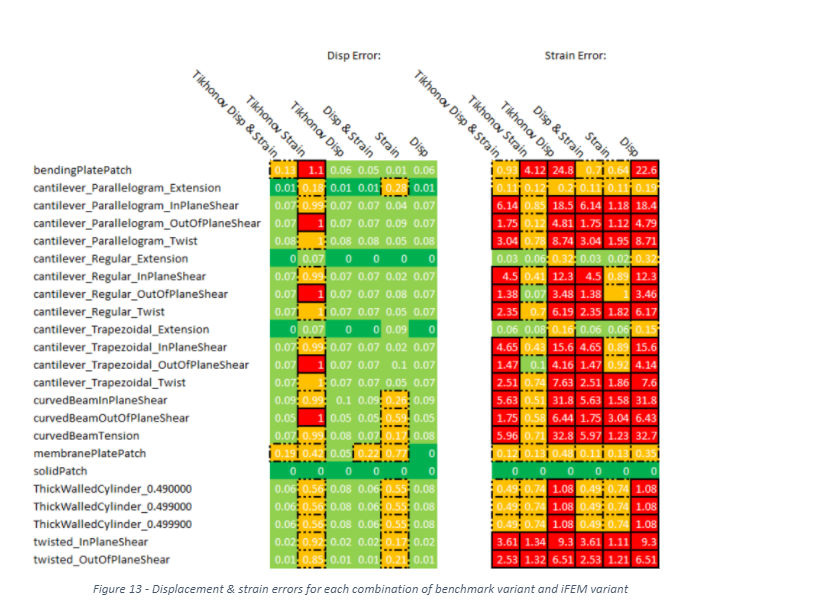-
Notifications
You must be signed in to change notification settings - Fork 10
Open
Labels
good first issueGood for newcomersGood for newcomers
Description
Benchmark section
Each benchmark page should consist of few sections described below. It would be the best to have some kind of template to store results in benchmarks. Possible structure of template:
- Analysis setup
- description of the model - what is it about and why it is interesting to run it
- expected final value if known or analytical equation
- geometry
- material model and properties
- type of solver - static, dynamic, heat-transfer, modal etc
- boundary conditions and loads
- additional features like contact, tie constraints, MPC constraints etc
- Some kind of summary of all tested codes. The possible summary may look like the table below. The rows show what codes have been tested and the columns describe the targets (for example for the tuning fork benchmark the targets might be frequency=440Hz and rigid Body mode check)

- Tested codes - each tested software should have its own page which contains
- Small description of what has been tested and what kind of meshes were used
- Reference to the files on github
- Results
- Summary in few bullet points which describe whether the benchmark give correct result, what is the user feeling while setting up model etc
Open-Source Software section
There should be a different section for Open-Source Software. The section will describe the available engineering codes and each software should have its own page with:
- description of what software can do
- some images from the software
- how to compile software under Linux (already available in the Simulation Environment setup page)
- interesting links - any useful pointers
Contribution Guide
Documentation setup should be changed to the Contribution Guide page (but let's keep it under the Documentation structure section). This page should describe our working environment:
- Work mainly with FOSS - what kind of Linux distro we are using
- mainly with Salome/Code_Aster and Calculix - put a link to the appropriate section in the documentation
- Working with meshpresso we are using Python 3.6 but tries to be compatible with 2.7 (for various reasons but mainly due to the fact that FEA software and Linux distros do not update the version that quickly)
- website compilation with sphinx - use what is already written
- contribution by sending the pull request to github repo
- don't know how to help? check the github repo issues
- examples of sites where the sphinx-notebook has been used: The Sphinx Book Theme, MyST NB, Cultural Analytics, Jupyter book,
So, if one wants to contribute then the best way would be to have the Github account, wants to use Linux, ideally git and Python.
Meshpresso section
The mesh converter should have its own section
- how to use it - use the examples from test_meshpresso.py but also write some example in markdown
- what is implemented and what are the plans
- meshpresso implementation - use the page that is already created by sphinx
- draw a proper class architecture, so it easy to understand the relations
- draw meshpresso node ordering convention and how to deal with your own
Additional tasks
Metadata
Metadata
Labels
good first issueGood for newcomersGood for newcomers